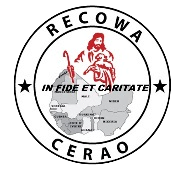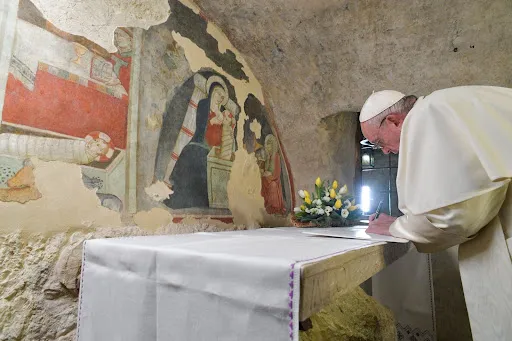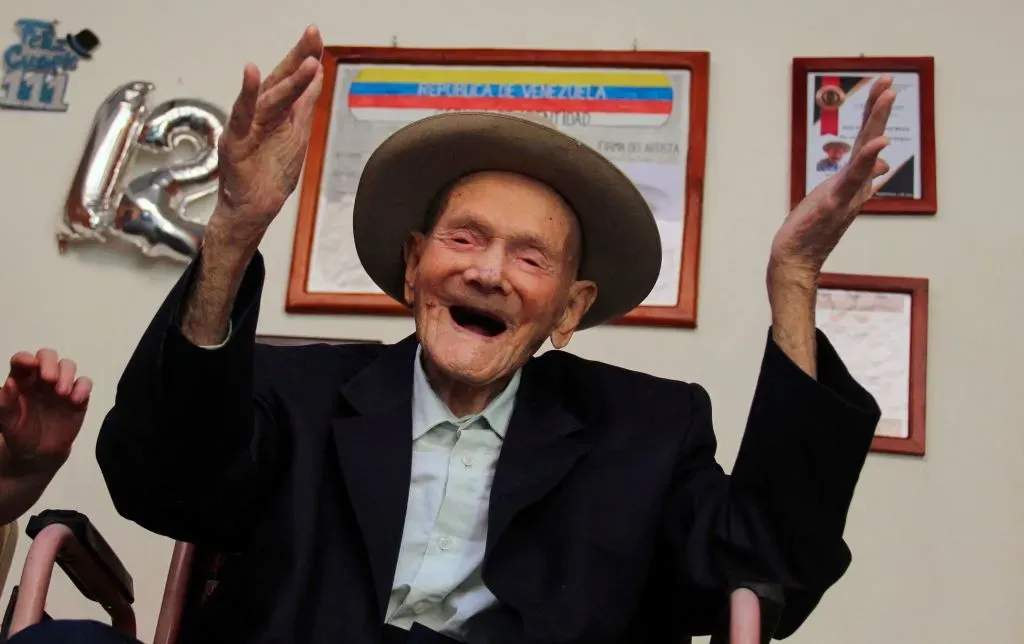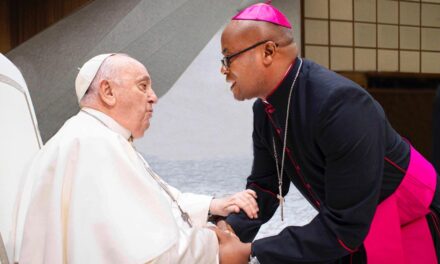O correspondente da RECOWACERAO NEWS AGENCY, RECONA, ligado à cidade do Vaticano, acompanhou o Santo Padre enquanto ele reflete sobre a história do primeiro presépio segundo São Francisco. A mensagem diz que é uma história de origem bem conhecida: como o jovem e rico Francisco de Assis abandonou livremente seu nobre patrimônio para servir a Igreja de Cristo como um pregador pobre e itinerante.
Um dos santos mais amados do mundo, o fundador da ordem franciscana se preocupava profundamente com a criação de Deus. Ele também amava o Natal, festa da Natividade de Nosso Senhor. As meditações de São Francisco sobre a vida de Cristo o levaram a criar o primeiro presépio em Greccio, Itália, em 1223. Acredita-se que a inspiração de Francisco para fazer uma representação ao vivo do nascimento de Jesus veio de seu tempo no Santo Terra nos anos 1219 e 1220.
Ver os locais sagrados do nascimento, vida, morte e ressurreição de Cristo os fez parecer ainda mais reais – e ele queria recriar essa experiência. Em novembro de 1223, três anos antes de sua morte, São Francisco estava em Roma para aguardar a aprovação do papa para o governo final de seus frades. O frade e o diácono já conheciam muito bem a cidade montanhosa de Greccio, cerca de 80 quilômetros ao norte de Roma. Ele havia chegado lá pela primeira vez há mais de uma década e voltava com frequência para pregar para as pessoas da zona rural circundante. Eventualmente, um eremitério foi construído para São Francisco a uma curta distância fora da cidade.
O Papa Francisco visita o local onde São Francisco criou o primeiro presépio fora de Greccio, Itália, em 1º de dezembro de 2019. Crédito: Vatican Media. Antes de seu retorno ao eremitério, duas semanas antes do Natal, Francisco pediu a seu amigo, senhor de Greccio Giovanni Velita, que preparasse uma caverna com animais vivos e uma manjedoura cheia de feno. O frade já havia recebido, durante sua audiência com o papa, permissão para encenar a cena do nascimento de Jesus em Belém.
Segundo o primeiro biógrafo de São Francisco, Frei Tomás de Celano, o frade quis “representar o nascimento daquele Menino em Belém, de modo que com os olhos do corpo vejamos o que sofreu por falta das necessidades de um recém-nascido e como jazia numa manjedoura entre o boi e o jumento”. Foi assim que, em dezembro de 1223, nos rochedos próximos a Greccio, as pessoas se aglomeraram para ver a cena simples durante a missa de Natal. São Francisco, que era diácono, anunciou o Evangelho e pregou a homilia.
Segundo relatos do momento, fogueiras iluminaram o cenário escuro enquanto uma multidão chegava ao local carregando velas e tochas. Uma testemunha ocular diz que um milagre aconteceu na missa naquela noite. Giovanni Veleti afirmou ter visto uma criança real aparecer na manjedoura vazia e que São Francisco tomou a bela criança em seus braços, segurando-a contra o peito em um abraço. No período que se seguiu, foram relatados outros milagres, realizados ao tocar na palha da manjedoura onde o Menino Jesus havia aparecido. Curas milagrosas ocorriam depois que pedaços de feno eram colocados em animais doentes ou mulheres em trabalho de parto em dificuldade.
Segundo a mídia vaticana, o local onde foi encenada a primeira Natividade ainda pode ser visto hoje no eremitério e santuário franciscano fora da cidade principal. A rocha é encimada por um altar para a celebração da missa e adornada com afrescos representando o nascimento de Jesus. O Papa Francisco visitou o local duas vezes: em 2016 e depois em 1º de dezembro de 2019, quando assinou uma carta apostólica sobre o significado e a importância dos presépios. “Todos os presentes” na Missa de Natal de São Francisco, escreveu o Papa Francisco em Admirable signum, “experimentaram uma alegria nova e indescritível na presença da cena natalina. O sacerdote então celebrou solenemente a Eucaristia sobre a manjedoura, mostrando o vínculo entre a Encarnação do Filho de Deus e a Eucaristia. Em Greccio não havia estátuas; o presépio foi encenado e vivenciado por todos os presentes”.
“De modo particular, desde as suas origens franciscanas, o presépio convida-nos a ‘sentir’ e a ‘tocar’ a pobreza que o Filho de Deus assumiu na Encarnação. Implicitamente, nos convoca a segui-lo pelo caminho da humildade, da pobreza e da abnegação que vai do administrador de Belém à cruz”, escreveu o Papa Francisco.
Le correspondant de RECOWACERAO NEWS AGENCY, RECONA, attaché à la ville du Vatican, a suivi le Saint-Père dans sa réflexion sur l’histoire de la première scène de la Nativité selon saint François. Le message est qu’il s’agit d’une histoire d’origine bien connue : comment le jeune et riche François d’Assise a librement abandonné son noble patrimoine pour servir l’Église du Christ en tant que pauvre prédicateur itinérant.
L’un des saints les plus aimés au monde, le fondateur de l’ordre franciscain se souciait profondément de la création de Dieu. Il aimait aussi Noël, la fête de la Nativité de Notre-Seigneur. Les méditations de saint François sur la vie du Christ l’ont amené à créer la toute première scène de la Nativité à Greccio, en Italie, en 1223. On pense que l’inspiration de François pour faire une représentation en direct de la naissance de Jésus est venue de son temps dans la Sainte Terre dans les années 1219 et 1220.
Voir les lieux saints de la naissance, de la vie, de la mort et de la résurrection du Christ les a fait se sentir d’autant plus réels – et il voulait recréer cette expérience. En novembre 1223, trois ans avant sa mort, saint François était à Rome pour attendre l’approbation du pape de la règle finale de ses frères. Le frère et le diacre connaissaient déjà très bien la ville montagnarde de Greccio, à environ 80 km au nord de Rome. Il y était arrivé pour la première fois plus d’une décennie auparavant et revenait fréquemment prêcher aux habitants de la campagne environnante. Finalement, un ermitage a été construit pour saint François à une courte distance de la ville.
Le pape François visite l’endroit où saint François a créé la première scène de la Nativité à l’extérieur de Greccio, en Italie, le 1er décembre 2019. Crédit : Vatican Media. Avant son retour à l’ermitage, deux semaines avant Noël, François a demandé à son ami, le seigneur de Greccio Giovanni Velita, de préparer une grotte avec des animaux vivants et une mangeoire remplie de foin. Le frère avait, lors de son audience avec le pape, déjà reçu l’autorisation de mettre en scène la scène de la naissance de Jésus à Bethléem.
Selon le premier biographe de saint François, frère Thomas de Celano, le frère a voulu «représenter la naissance de cet enfant à Bethléem de telle manière que nous puissions voir de nos yeux corporels ce qu’il a souffert faute des nécessités d’un nouveau-né et comment il gisait dans une crèche entre le bœuf et l’âne. C’est ainsi qu’en décembre 1223, dans les rochers escarpés à quelques encablures de Greccio, les gens affluèrent pour voir la simple scène de la messe de Noël. Saint François, qui était diacre, proclama l’Évangile et prêcha l’homélie.
Selon les récits du moment, des incendies éclairaient la scène sombre tandis que des foules arrivaient sur place portant des bougies et des torches. Un témoin dit qu’un miracle s’est produit à la messe ce soir-là. Giovanni Veleti a affirmé qu’il a vu un vrai enfant apparaître dans la crèche vide et que saint François a pris le bel enfant dans ses bras, le tenant contre sa poitrine dans une étreinte. Dans la période qui suivit, d’autres miracles furent rapportés, provoqués en touchant la paille de la crèche où l’Enfant Jésus était apparu. Des guérisons miraculeuses ont eu lieu après que des morceaux de foin aient été placés sur des animaux malades ou des travailleuses en difficulté.
Selon les médias du Vatican, le lieu où la première Nativité a été mise en scène est encore visible aujourd’hui dans l’ermitage et le sanctuaire franciscains à l’extérieur de la ville principale. Le rocher est surmonté d’un autel pour célébrer la messe et orné de fresques représentant la naissance de Jésus. Le pape François s’est rendu sur les lieux à deux reprises : en 2016 puis le 1er décembre 2019, lorsqu’il a signé une lettre apostolique sur le sens et l’importance des scènes de la Nativité. « Tous ceux qui étaient présents » à la messe de Noël de saint François, écrit le pape François dans Admirable signum, « ont éprouvé une joie nouvelle et indescriptible en présence de la scène de Noël. Le prêtre célébra alors solennellement l’Eucharistie au-dessus de la crèche, montrant le lien entre l’Incarnation du Fils de Dieu et l’Eucharistie. A Greccio, il n’y avait pas de statues ; la scène de la Nativité a été mise en scène et vécue par tous ceux qui étaient présents.
« D’une manière particulière, depuis ses origines franciscaines, la crèche nous invite à “sentir” et à “toucher” la pauvreté que le Fils de Dieu a prise sur lui dans l’Incarnation. Implicitement, elle nous appelle à le suivre sur le chemin de l’humilité, de la pauvreté et de l’abnégation qui mène du directeur de Bethléem à la croix », a écrit le pape François.
The Correspondent of RECOWACERAO NEWS AGENCY, RECONA, attached to the city of the Vatican has followed the Holy Father as he reflects on the Story of the First Nativity Scene according to Saint Francis. The message has it that it is a well-known origin story: how the young and wealthy Francis of Assisi freely abandoned his noble patrimony to serve Christ’s Church as a poor, itinerant preacher.
One of the world’s most beloved saints, the founder of the Franciscan order cared deeply for God’s creation. He also loved Christmas, the feast of the Nativity of Our Lord. Saint Francis’ meditations on the life of Christ led him to create the first-ever Nativity scene in Greccio, Italy, in 1223. It is believed Francis’ inspiration to do a live representation of the birth of Jesus came from his time in the Holy Land in the years 1219 and 1220.
Seeing the holy sites of Christ’s birth, life, death, and resurrection made them feel all the more real — and he wanted to recreate that experience. In November 1223, three years before his death, St. Francis was in Rome to await the pope’s approval of the final rule of his friars. The friar and deacon were already very familiar with the hilltown of Greccio, about 50 miles north of Rome. He had first arrived there over a decade prior and would frequently return to preach to the people of the surrounding countryside. Eventually, a hermitage was built for St. Francis a short distance outside the town.
Pope Francis visits the place where St. Francis created the first Nativity scene outside of Greccio, Italy, on Dec. 1, 2019. Credit: Vatican Media. Ahead of his return to the hermitage, two weeks before Christmas, Francis asked his friend, Lord of Greccio Giovanni Velita, to prepare a cave with live animals and a hay-filled manger. The friar had, during his audience with the pope, already received permission to stage the scene of Jesus’ birth in Bethlehem.
According to the first biographer of St. Francis, Brother Thomas of Celano, the friar desired to “represent the birth of that Child in Bethlehem in such a way that with our bodily eyes we may see what he suffered for lack of the necessities of a newborn babe and how he lay in a manger between the ox and ass.” That was how, in December 1223, in the rocky crags a short distance outside Greccio, people flocked to see the simple scene during Christmas Mass. Saint Francis, who was a deacon, proclaimed the Gospel and preached the homily.
According to accounts of the moment, fires lit the dark scene while crowds arrived at the spot carrying candles and torches. An eyewitness says a miracle happened at Mass that night. Giovanni Veleti asserted that he saw a real infant appear in the empty manger and that St. Francis took the beautiful child into his arms, holding him to his chest in an embrace. In the period that followed, other miracles were reported, brought about by touching the straw of the manger where the Child Jesus had appeared. Miraculous healings took place after pieces of hay were placed on sick animals or laboring women in difficulty.
According to the Vatican Media, the place where the first Nativity was staged can still be seen today in the Franciscan hermitage and sanctuary outside the main town. The rock is topped by an altar for celebrating Mass and adorned with frescoes depicting Jesus’ birth. Pope Francis has visited the spot two times: in 2016 and then on Dec. 1, 2019, when he signed an apostolic letter on the meaning and importance of Nativity scenes. “All those present” at St. Francis’ Christmas Mass, Pope Francis wrote in Admirable signum, “experienced a new and indescribable joy in the presence of the Christmas scene. The priest then solemnly celebrated the Eucharist over the manger, showing the bond between the Incarnation of the Son of God and the Eucharist. At Greccio there were no statues; the Nativity scene was enacted and experienced by all who were present.”
“In a particular way, from the time of its Franciscan origins, the Nativity scene has invited us to ‘feel’ and ‘touch’ the poverty that God’s Son took upon himself in the Incarnation. Implicitly, it summons us to follow him along the path of humility, poverty, and self-denial that leads from the manager of Bethlehem to the cross,” Pope Francis wrote.
- RECOWA-CERAO WELCOMES TWO NEW BISHOPS - July 26, 2024
- TODAY WE ARE TAKING UP THE THIRD SEGMENT IN OUR SERIES - July 26, 2024
- CHARACTERISTICS OF GREAT LEADERS SHARED BY A USA AUTHOR - July 25, 2024







